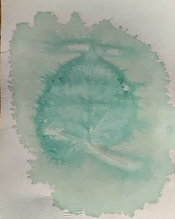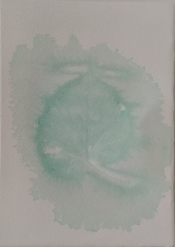Hi there. I was recently looking at the periodic table of elements, remembering that elements in the same columns often have similar properties. The group into which silver is places is as follows: Cu; Ag; Au; ...; (Elements after gold are heavy and radioactive). NOW: Silver salts are photosensitive. The most photosensitive salts are its halides, three of which are used for photographic purposes. AgCl, AgBr and AgI. AND I know Sir John William Herschel had developed a process called Aurotype, which took advantage of the light sensitivity of AuCl, gold chloride, and used potassium ferricyanide as a physical developer. (Please correct me if I'm wrong bc I haven't been able to find much info about the aurotype process)
AND I've somewhere read on APUG, a certain, I'd say, great, user called Photo Engineer had been commented on an attempt to use copper salts for photography, back on the days when he seems to have worked for Kodak.
He went on saying things like certain copper salts are sensitive to light, and then some salt was dispersed on some kind of peptisizing agent (which is a fancy name for gelatin, in this case), development was like {INFO MISSING} and the image was unstable, often converting itself to copper oxide on contact with air and suffering from stability issues.
Now, you know I'm passionate for these little things that could work, but didn't get to work because X happened.
I can't find any publications on the matter, nor can I find the postings I once read back on 2019 in this forum. (And even if I found them, Photo Engineer didn't say much else.)
Now I think the use of copper salts is underrated and they could make an interesting thing in the photographic community. Specially (if, on an ideal case, their performance were to become similar than that of silver bromide-gelatin film) because Silver, Gold, Platinum, are all precious metals, priced as commodities. Which, let's be honest, keeps the photographic material's cost high, and for us, newborn photographers interested in the art like it was the 50s, the opportunity cost of purchasing silver salts is, again, high.
The thing is that Photo Engineer had this idea of the "process" like it wasn't worth it, probably because he got to experiment with it and couldn't make it work. I am, actually, a little afraid of asking for information about the topic because he didn't say much before and all I have is the enthusiasm of someone who's young.
From reading some Wikipedia (And bear in mind I don't understand A THING from complex chemistry) I make a conjecture of how could a photographic process be made:
First the copper(i) salt of preference (the one most sensitive to light overall) is precipitated on a peptisizing agent from a mild reducing agent, like, say, catechol or ascorbic acid, from its copper(ii) form. (You mix water, gelatin, ascorbic acid and copper(ii) chloride and stir at high speed) The copper(i) salt form is unstable and would get oxidized on contact with air, so the colloid now has to be preserved.
This colloid is coated onto a substrate and made dry.
There is exposure to light. (UV light, probably.)
I don't know what kind of reaction does this salt undergo upon the action of light. I assume it gets a change on its oxidizing state.
There is development, comprised by a chemical that reacts ONLY with EITHER the original salt, OR the byproduct of light exposure to yield certain chemical that can be separated AND is visible. copper(i) salts often form coordination complexes with a lot of different organic compounds. I'm thinking maybe binding these salts to a diazo precursor, to then extract the non-image chemicals from the substrate and then go further developing an aniline-based image. I don't know, I'm just chattering things here...
QUESTION TIME
It'd be actually great that Photo Engineer would tell us anything he knows about this experimental process.
Patents, papers, any kind of information about even the property of copper salts being light sensitive is scarse, though Sigma-Aldrich warns copper(I) iodide buyers to not expose it to sunshine. I kinda feel it's an unspoken truth.
There was a patent issued long ago that talked about certain copper compound being sensitive to what is supposed to be deep uv light. "Actinic light" they said... WHAT?! Sensitivity wouldn't be great, but if Mr. Sun provides it, we can use it. (Aquarium lights can, for what I've seen)
Any comments are welcome, and it'd be interesting if we could sort something out. Maybe put my weary mind to rest.
AND I've somewhere read on APUG, a certain, I'd say, great, user called Photo Engineer had been commented on an attempt to use copper salts for photography, back on the days when he seems to have worked for Kodak.
He went on saying things like certain copper salts are sensitive to light, and then some salt was dispersed on some kind of peptisizing agent (which is a fancy name for gelatin, in this case), development was like {INFO MISSING} and the image was unstable, often converting itself to copper oxide on contact with air and suffering from stability issues.
Now, you know I'm passionate for these little things that could work, but didn't get to work because X happened.
I can't find any publications on the matter, nor can I find the postings I once read back on 2019 in this forum. (And even if I found them, Photo Engineer didn't say much else.)
Now I think the use of copper salts is underrated and they could make an interesting thing in the photographic community. Specially (if, on an ideal case, their performance were to become similar than that of silver bromide-gelatin film) because Silver, Gold, Platinum, are all precious metals, priced as commodities. Which, let's be honest, keeps the photographic material's cost high, and for us, newborn photographers interested in the art like it was the 50s, the opportunity cost of purchasing silver salts is, again, high.
The thing is that Photo Engineer had this idea of the "process" like it wasn't worth it, probably because he got to experiment with it and couldn't make it work. I am, actually, a little afraid of asking for information about the topic because he didn't say much before and all I have is the enthusiasm of someone who's young.
From reading some Wikipedia (And bear in mind I don't understand A THING from complex chemistry) I make a conjecture of how could a photographic process be made:
First the copper(i) salt of preference (the one most sensitive to light overall) is precipitated on a peptisizing agent from a mild reducing agent, like, say, catechol or ascorbic acid, from its copper(ii) form. (You mix water, gelatin, ascorbic acid and copper(ii) chloride and stir at high speed) The copper(i) salt form is unstable and would get oxidized on contact with air, so the colloid now has to be preserved.
This colloid is coated onto a substrate and made dry.
There is exposure to light. (UV light, probably.)
I don't know what kind of reaction does this salt undergo upon the action of light. I assume it gets a change on its oxidizing state.
There is development, comprised by a chemical that reacts ONLY with EITHER the original salt, OR the byproduct of light exposure to yield certain chemical that can be separated AND is visible. copper(i) salts often form coordination complexes with a lot of different organic compounds. I'm thinking maybe binding these salts to a diazo precursor, to then extract the non-image chemicals from the substrate and then go further developing an aniline-based image. I don't know, I'm just chattering things here...
QUESTION TIME
It'd be actually great that Photo Engineer would tell us anything he knows about this experimental process.
Patents, papers, any kind of information about even the property of copper salts being light sensitive is scarse, though Sigma-Aldrich warns copper(I) iodide buyers to not expose it to sunshine. I kinda feel it's an unspoken truth.
There was a patent issued long ago that talked about certain copper compound being sensitive to what is supposed to be deep uv light. "Actinic light" they said... WHAT?! Sensitivity wouldn't be great, but if Mr. Sun provides it, we can use it. (Aquarium lights can, for what I've seen)
Any comments are welcome, and it'd be interesting if we could sort something out. Maybe put my weary mind to rest.






